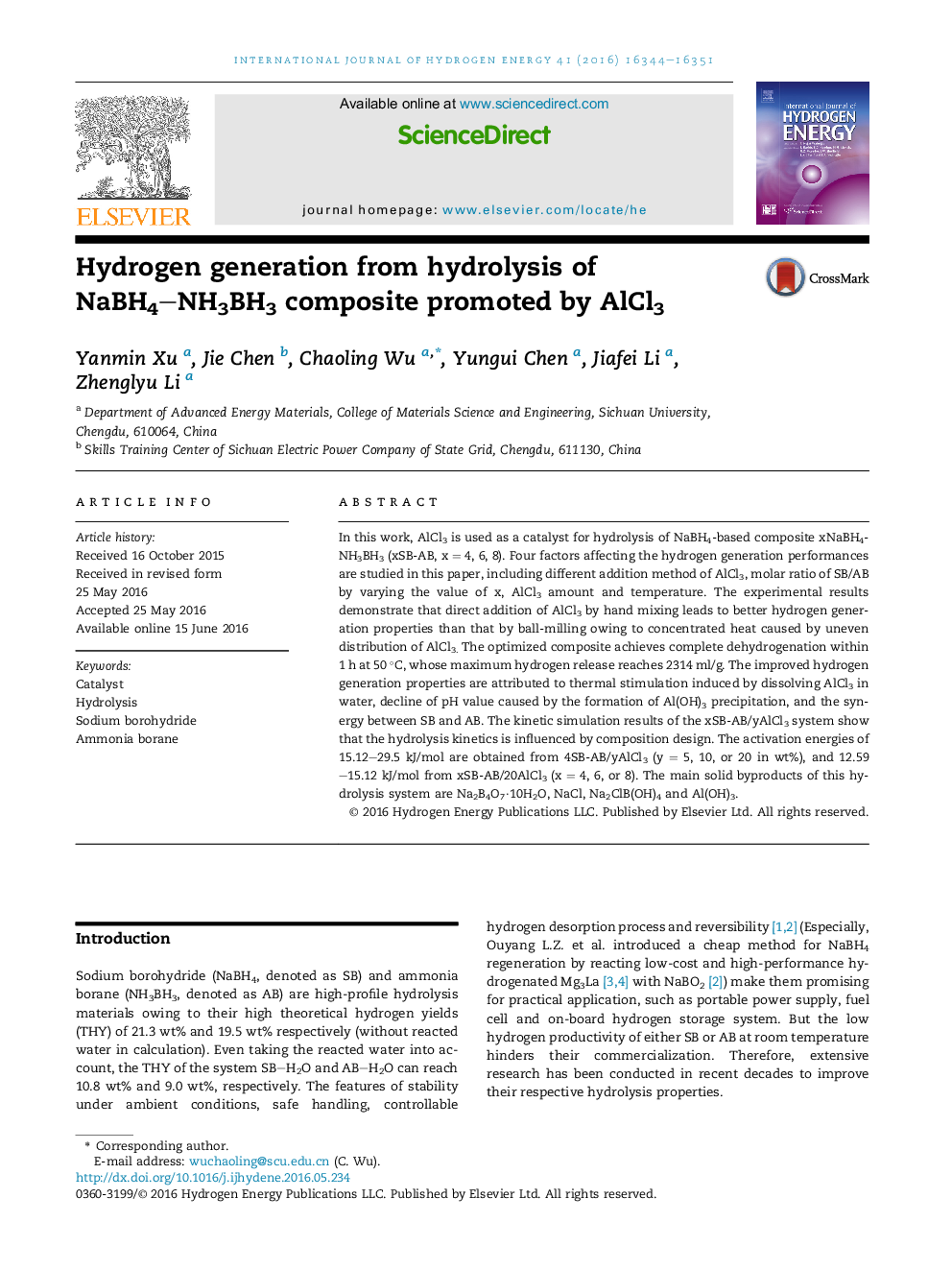| Article ID | Journal | Published Year | Pages | File Type |
|---|---|---|---|---|
| 5147643 | International Journal of Hydrogen Energy | 2016 | 8 Pages |
Abstract
In this work, AlCl3 is used as a catalyst for hydrolysis of NaBH4-based composite xNaBH4-NH3BH3 (xSB-AB, x = 4, 6, 8). Four factors affecting the hydrogen generation performances are studied in this paper, including different addition method of AlCl3, molar ratio of SB/AB by varying the value of x, AlCl3 amount and temperature. The experimental results demonstrate that direct addition of AlCl3 by hand mixing leads to better hydrogen generation properties than that by ball-milling owing to concentrated heat caused by uneven distribution of AlCl3. The optimized composite achieves complete dehydrogenation within 1 h at 50 °C, whose maximum hydrogen release reaches 2314 ml/g. The improved hydrogen generation properties are attributed to thermal stimulation induced by dissolving AlCl3 in water, decline of pH value caused by the formation of Al(OH)3 precipitation, and the synergy between SB and AB. The kinetic simulation results of the xSB-AB/yAlCl3 system show that the hydrolysis kinetics is influenced by composition design. The activation energies of 15.12-29.5 kJ/mol are obtained from 4SB-AB/yAlCl3 (y = 5, 10, or 20 in wt%), and 12.59-15.12 kJ/mol from xSB-AB/20AlCl3 (x = 4, 6, or 8). The main solid byproducts of this hydrolysis system are Na2B4O7·10H2O, NaCl, Na2ClB(OH)4 and Al(OH)3.
Related Topics
Physical Sciences and Engineering
Chemistry
Electrochemistry
Authors
Yanmin Xu, Jie Chen, Chaoling Wu, Yungui Chen, Jiafei Li, Zhenglyu Li,
